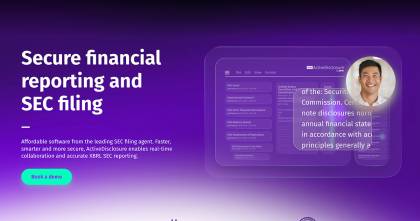When a company is taken public using a SPAC — which stands for Special Purpose Acquisition Company — the process may seem similar to a merger. While there are many similarities, there are also a few ways that the de-SPAC process differs from a merger. In short, a de-SPAC transaction is defined as a company merger involving a SPAC, a buying entity and a target private business. Learn the process, timeline and requirements for the de-SPAC transition to prepare the business and the documentation that's needed.
De-SPAC Defined
SPACs exist before a deal; many are actively searching for companies they wish to acquire. When a SPAC identifies a potential match, they'll begin the acquisition process through a formal letter of intent, which is followed by a due diligence phase and the execution of a merger agreement.
The due diligence phase typically includes a legal review of the company, a tax and accounting review, and a business valuation done by an independent third party. The SPAC undertakes the due diligence to verify that the company is presenting itself accurately; there are also target valuation considerations from the NASDAQ and NYSE. The de-SPAC transition process officially begins once the formal merger is announced, which may occur alongside or shortly after the due diligence phase.
SPAC shareholders have certain rights and responsibilities that parties in a merger do not have. For instance, SPAC shareholders must approve the deal. Generally, the deal will require at least 20% shareholder approval, although companies can structure their deals differently. Post-deal, they are prohibited from taking certain actions by security law. For example, they are generally required to retain their equity for at least 12 months after the deal.
De-SPAC Timeline and Process
Once a merger agreement is signed, the deal is announced publicly and investors are notified. The business must now file with the SEC an S-4 proxy financial statement with audited numbers and a prospectus. The S-4 must contain financial statements from both the SPAC and the target company, as well as:
- Managerial discussion about the SPAC and target company
- Historical financial data about both parties
- Cost-per-share information
- Description of the structure of the company, post-acquisition
- Any debt financing agreements related to de-SPAC
This phase can take anywhere from one week to one month to complete.
Following this filing, the SEC will review the documentation presented and may ask for comments from the company. The business will need to retain a proxy solicitor to handle the shareholder vote that is required for de-SPAC transitions. The company will need to set a date for the vote and mail flyers to all shareholders at least three weeks in advance. This intermediate phase takes a couple of weeks; at this time, the company will also develop a marketing plan to ensure success of the deal.
The final phase of the SPAC process lasts two weeks on average; thus, the entire process can be complete within eight to ten weeks, if everything moves quickly and there are no delays. While most de-SPAC transitions are fairly swift, there may be instances when they take longer. The SEC can take as long as 30 days to release their comments. If the business needs to go back and forth with the SEC to resolve comments, the process could take several months.
In the final phase, the business will undertake a formal road show process to introduce themselves to potential investors and generate interest. As the deal moves to a close, companies typically keep an eye on large shareholders with the help of underwriters. They also finalize everything with the SEC. Two days before the vote, the company will tally the redemption requests (which is where SPAC shareholders get to redeem their stock). Then, they will hold the vote and conclude the transaction by filing the 8-K form and changing the SPAC's name to the name of the company that was acquired.
While rare, a SPAC deal can fall apart. If this occurs, parties have the option to renegotiate the terms of the deal or terminate the agreement.
Resources for the De-SPAC Transition
Between the due diligence phase and the SEC reporting requirements, there is a lot of documentation within a de-SPAC transition. Companies need to maintain comprehensive records, furnish information quickly when asked and make sure that everything is accurate.
Fortunately, there are integration tools that can assist with the due diligence and post-acquisition phases of SPAC and de-SPAC. One such solution is ActiveDisclosure℠, which is designed expressly for SEC filing and financial reporting. With ActiveDisclosure℠, businesses can draw upon a single source of truth, such as an Excel spreadsheet, to prepare documents; rely on health checks that verify completeness before SEC transmission; and keep collaborators in the loop by assigning tasks, updating teams or making edits with a track changes feature.
Additional M&A solutions found within this platform include merger management software that provides AI-enabled automated contract review capabilities and virtual data rooms to facilitate secure handling of sensitive information in real time.
The de-SPAC approval process requires accuracy and attention to detail. Not only can ActiveDisclosure℠ streamline the needed reporting, but DFIN also offers 24/7/365 service from regional experts who can help you through any part of the process. Get the deal done without stressing about the little things.





